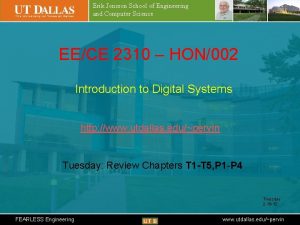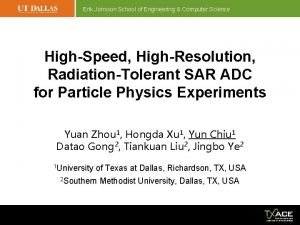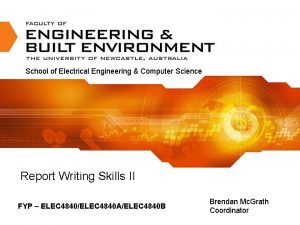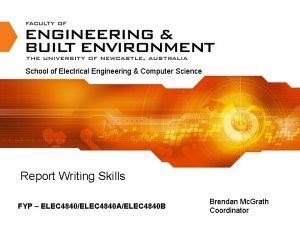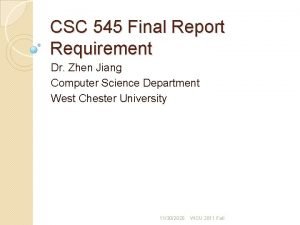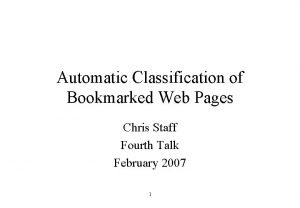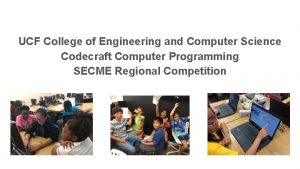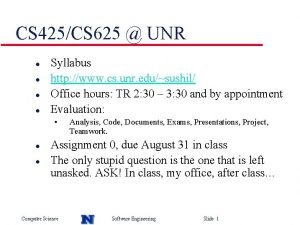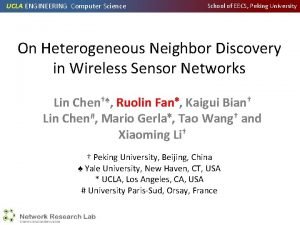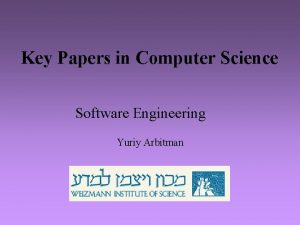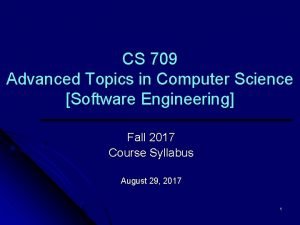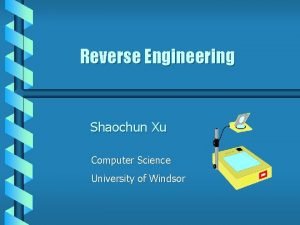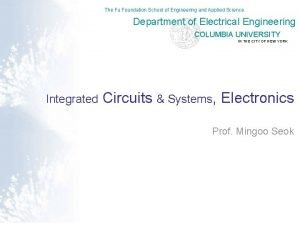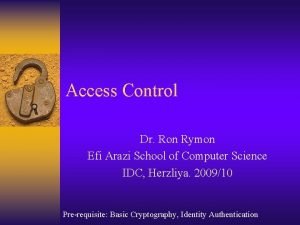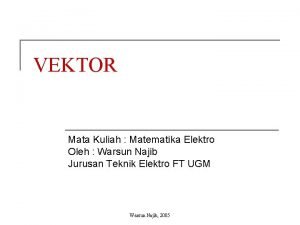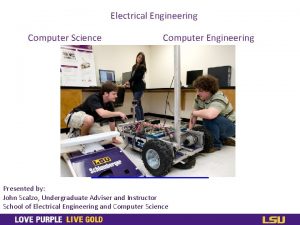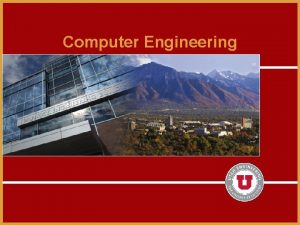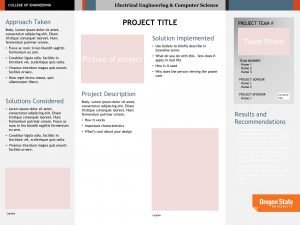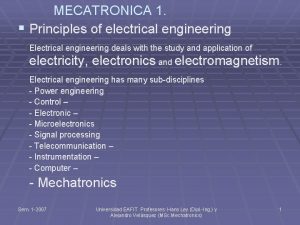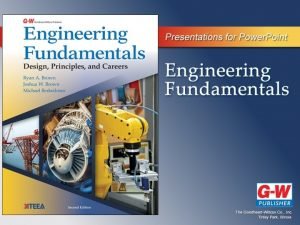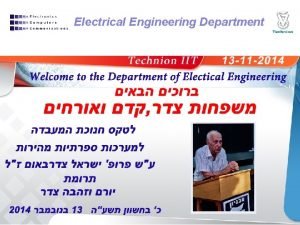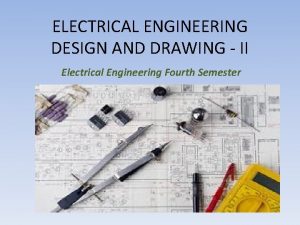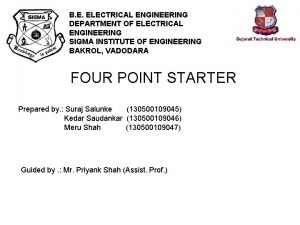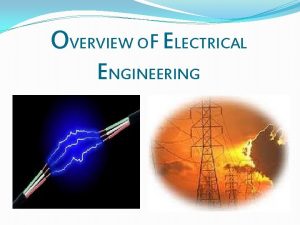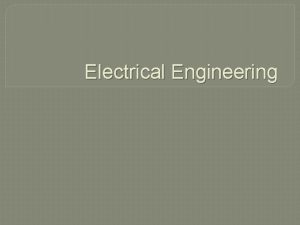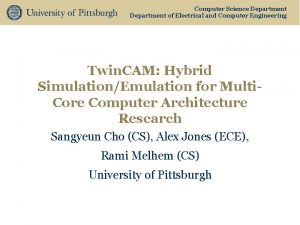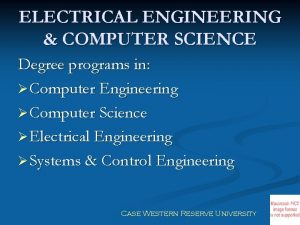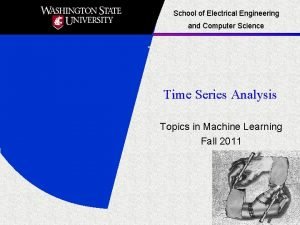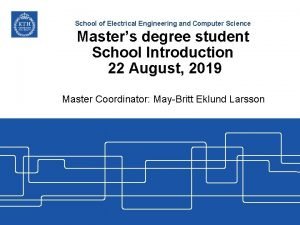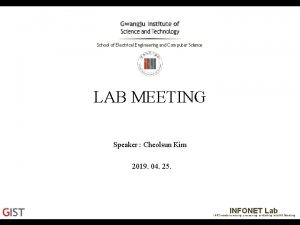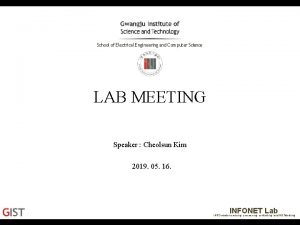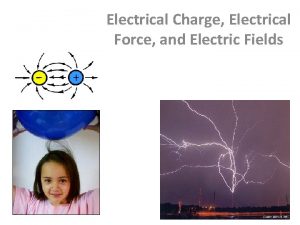School of Electrical Engineering Computer Science Report Writing


















![IEEE Referencing System • To cite more than 1 source: Ø [1], [2], [6] IEEE Referencing System • To cite more than 1 source: Ø [1], [2], [6]](https://slidetodoc.com/presentation_image_h/9cd32ad7e0ad08939c4612357b198b34/image-19.jpg)

![Examples • Books [1] G. O. Young, “Synthetic structure of industrial plastics, ” in Examples • Books [1] G. O. Young, “Synthetic structure of industrial plastics, ” in](https://slidetodoc.com/presentation_image_h/9cd32ad7e0ad08939c4612357b198b34/image-21.jpg)
![Examples • Journal Proceedings and Periodicals [3] J. U. Duncombe, “Infrared navigation—Part I: An Examples • Journal Proceedings and Periodicals [3] J. U. Duncombe, “Infrared navigation—Part I: An](https://slidetodoc.com/presentation_image_h/9cd32ad7e0ad08939c4612357b198b34/image-22.jpg)
![Examples • Conference Proceedings [6] D. B. Payne and J. R. Stern, “Wavelength-switched passively Examples • Conference Proceedings [6] D. B. Payne and J. R. Stern, “Wavelength-switched passively](https://slidetodoc.com/presentation_image_h/9cd32ad7e0ad08939c4612357b198b34/image-23.jpg)
![Examples • Standards and Patents [8] G. Brandli and M. Dick, “Alternating current fed Examples • Standards and Patents [8] G. Brandli and M. Dick, “Alternating current fed](https://slidetodoc.com/presentation_image_h/9cd32ad7e0ad08939c4612357b198b34/image-24.jpg)
![Examples • Application Notes and Data Sheets [10] Hewlett-Packard, Appl. Note 935, pp. 25 Examples • Application Notes and Data Sheets [10] Hewlett-Packard, Appl. Note 935, pp. 25](https://slidetodoc.com/presentation_image_h/9cd32ad7e0ad08939c4612357b198b34/image-25.jpg)

- Slides: 26

School of Electrical Engineering & Computer Science Report Writing Skills II FYP – ELEC 4840/ELEC 4840 A/ELEC 4840 B Slide 1 Brendan Mc. Grath Coordinator

Overview • Interim Reports – Requirements and Format • Plagiarism and Academic Integrity • Referencing Requirements • The IEEE style • Resources Slide 2

Interim Report Requirements • Mandatory Inclusions: Ø Title Page – Author / Project Title / Supervisor Ø Abstract – Project scope and outcomes thus far Ø Table of Contents Ø References Ø Correct Grammar and Spelling! Slide 3

Interim Report Requirements • Page Length Constraint: Ø Soft limit – 20 pages excluding front-matter and appendices Ø Reports > 20 pages will not be penalised, unless there is less than 20 pages worth of actual content Ø Examiners will appreciate a concise report Slide 4

Interim Report – Format • Format Requirements: Ø A 4 Paper Size with Margins: o Left side : 30 - 35 mm (for binding) o Right side : 25 - 30 mm o Top : 30 - 35 mm o Bottom : 30 - 35 mm Ø Line Spacing – 1. 5 Lines Ø Body Text Font – 11 pt justified (Times New Roman). Slide 5

Interim Report – Format • Chapters / Appendices / Front Matter Ø Front Matter Page Numbering – Roman Numerals Ø Page 1 begins on the first page of Chapter 1 Ø Appendices are labeled alphabetically (A, B, C, etc. ) Ø Appendix page numbers – A 1, A 2, etc. Ø Page numbers – Appear in the bottom right hand corner Ø Headers are recommended with Chapter heads, left justified Slide 6

Interim Report – Format • Figures should: Ø Appear only after being referenced in the text Ø Be placed on the bottom of the page with a caption Ø Figure labels – Chapter. Count (E. g. Figure 2. 3) • Recommendation : Ø Encapsulated Post Script Ø Greater than 600 dpi Slide 7

Interim Report – Format • Equations should: Ø Be numbered when referenced in the text Ø Equation labels – Chapter. Count (E. g. Equation 3. 2) Ø Only significant equation need labels Ø Recall – Extensive mathematics live in Appendices Slide 8

Interim Report – Scope • The interim report must address: Ø The work completed to date Ø A realistic plan for the remainder of the project • The interim report must contain / address: Ø Project background – The literature review Ø Achievements thus far Ø Work to be carried out, by when and how Slide 9

Interim Report – Assessment • Reports to be assessed by Project Supervisors • Criterion Fail Ø Report must be > 50% to pass the project • Examination criteria - The student has: Ø Adequately engaged in the project Ø Carried out work at the required standard Ø A realistic plan for completing the project Slide 10

Plagiarism • Plagiarism - The presentation of the thoughts or works of another as one's own. • This includes (Uo. N policy on Academic Integrity): Ø copying or paraphrasing material from any source without due acknowledgment Ø using another's ideas without due acknowledgment Ø working with others without permission and presenting the resulting work as though it was completed independently Slide 11

Plagiarism and Academic Misconduct • With respect to FYP – Academic Misconduct includes: Ø Falsification of data and results Ø Engaging someone else to conduct the work • Suspected cases of misconduct or plagiarism must be referred to the Student Academic Conduct Officer • http: //www. newcastle. edu. au/service/academicintegrity/students/index. html Slide 12

Purpose of Referencing • Referencing systems are used for the following reasons: Ø To accurately identify source material for key concepts and ideas Ø To use the authority of a key source to support your ideas Ø To demonstrate broad understanding and familiarity with the field Ø To direct interested readers to the original sources. Ø To contrast different approaches or results from previous studies Ø To avoid plagiarism! Slide 13

Referencing Requirements • Any material extracted directly from another source without alteration must be referenced • This includes: Ø Quoted text or equations Ø Figures, schematics, tables Ø Source code (software or simulations) Ø Hardware details Slide 14

Referencing Requirements • You must also reference any concept or idea discussed in the text which is: Ø Paraphrased but derived from a source, and Ø Not common knowledge • Example: Ø Ohm’s law would not need to be referenced Ø Kalman filtering should be referenced Slide 15

Referencing Systems • There are two major classes of referencing system: Ø In Text Referencing (Example : Harvard or Author/Date) Ø Numeric Referencing (Example : IEEE) • You are free to choose from these styles, but: Ø IEEE is the recommended style Ø You must be consistent throughout the document. Slide 16

IEEE Referencing System • References are numbered according to the order that they are cited in the text • Sources have the same number throughout the document • Each citation number is enclosed by square brackets on the text line. E. g. “This is an IEEE reference [4]. ” • Do not state “In reference [3]…” • State “In [3] it was found…” Slide 17

IEEE Referencing System • Author names need not be mentioned. • If they are to be mentioned: Ø Up to six authors can be mentioned in the text Ø Only the first author is preferable - followed by et al. Ø E. g. “In [4], Jones, Watson and Harris defined …” Ø E. g. “In [3], Clark et al. demonstrated that …” • Do not include source titles, dates, etc. in the text. Slide 18
![IEEE Referencing System To cite more than 1 source Ø 1 2 6 IEEE Referencing System • To cite more than 1 source: Ø [1], [2], [6]](https://slidetodoc.com/presentation_image_h/9cd32ad7e0ad08939c4612357b198b34/image-19.jpg)
IEEE Referencing System • To cite more than 1 source: Ø [1], [2], [6] or [1, 2, 6] Ø [6] – [15] or [6 – 15] • Citations should be in plain font : Ø No text formatting such as Superscript/Subscript/Italics Slide 19

IEEE Referencing System • The Reference List: Ø In numerical order – i. e. the order of citation Ø Significant words in the source title must be capitalised Ø First word in article titles, papers, theses must be capitalised • General Format: Ø Author, “Article or book title, ” Source Title, Source information, Date, Pages. Slide 20
![Examples Books 1 G O Young Synthetic structure of industrial plastics in Examples • Books [1] G. O. Young, “Synthetic structure of industrial plastics, ” in](https://slidetodoc.com/presentation_image_h/9cd32ad7e0ad08939c4612357b198b34/image-21.jpg)
Examples • Books [1] G. O. Young, “Synthetic structure of industrial plastics, ” in Plastics, 2 nd ed. , vol. 3, J. Peters, Ed. New York, Mc. Graw-Hill, 1964, pp. 15– 64. [2] W. -K. Chen, Linear Networks and Systems. Belmont, CA: Wadsworth, 1993, pp. 123– 135. Slide 21
![Examples Journal Proceedings and Periodicals 3 J U Duncombe Infrared navigationPart I An Examples • Journal Proceedings and Periodicals [3] J. U. Duncombe, “Infrared navigation—Part I: An](https://slidetodoc.com/presentation_image_h/9cd32ad7e0ad08939c4612357b198b34/image-22.jpg)
Examples • Journal Proceedings and Periodicals [3] J. U. Duncombe, “Infrared navigation—Part I: An assessment of feasibility, ” IEEE Trans. Electron Devices, vol. ED-11, pp. 34 – 39, Jan. 1959. [4] E. P. Wigner, “Theory of travelling-wave optical laser, ” Phys. Rev. , vol. 134, pp. A 635–A 646, Dec. 1965. [5] A. Kurnia, H. Cherradi, D. M. Divan, “Impact of IGBT Behaviour on Design Optimisation of Soft Switching Inverter Topologies, ” IEEE Trans. Ind. Applicat. , Vol. 31, No. 2, March/April 1995, pp. 280 – 286. Slide 22
![Examples Conference Proceedings 6 D B Payne and J R Stern Wavelengthswitched passively Examples • Conference Proceedings [6] D. B. Payne and J. R. Stern, “Wavelength-switched passively](https://slidetodoc.com/presentation_image_h/9cd32ad7e0ad08939c4612357b198b34/image-23.jpg)
Examples • Conference Proceedings [6] D. B. Payne and J. R. Stern, “Wavelength-switched passively coupled single-mode optical network, ” in Proc. IOOC-ECOC, 1985, pp. 585– 590. [7] V. Agelidis and M. Calais, “Application Specific Harmonic Performance Evaluation of Multicarrier PWM Techniques, ” in Proc. IEEE Power Electronics Specialists Conference (PESC), 1998, Japan, pp. 172 – 178. [8] D. Ebehard and E. Voges, “Digital single sideband detection for interferometric sensors, ” presented at the 2 nd Int. Conf. Optical Fiber Sensors, Stuttgart, Germany, 1984. Slide 23
![Examples Standards and Patents 8 G Brandli and M Dick Alternating current fed Examples • Standards and Patents [8] G. Brandli and M. Dick, “Alternating current fed](https://slidetodoc.com/presentation_image_h/9cd32ad7e0ad08939c4612357b198b34/image-24.jpg)
Examples • Standards and Patents [8] G. Brandli and M. Dick, “Alternating current fed power supply, ” U. S. Patent 4 084 217, Nov. 4, 1978. • Websites [9] Computational, Optical, and Discharge Physics Group, University of Illinois at Urbana-Champaign, "Hybrid plasma equipment model: Inductively coupled plasma reactive ion etching reactors, " 11 December 1995, http: //uigelz. ece. uiuc. edu/Projects/HPEM-ICP/index. html. Slide 24
![Examples Application Notes and Data Sheets 10 HewlettPackard Appl Note 935 pp 25 Examples • Application Notes and Data Sheets [10] Hewlett-Packard, Appl. Note 935, pp. 25](https://slidetodoc.com/presentation_image_h/9cd32ad7e0ad08939c4612357b198b34/image-25.jpg)
Examples • Application Notes and Data Sheets [10] Hewlett-Packard, Appl. Note 935, pp. 25 -29. May 14 2004. [11] Fairchild Semiconductor. Data Sheet MM 74 HC 74 A, pp. 3 – 4, January 12, 2001, http: //www. fairchildsemi. com. • Thesis or Dissertation [12] H. Zhang, "Delay-insensitive networks, " M. S. thesis, University of Waterloo, ON, Canada, 1997. Slide 25

Resources • IEEEXplore to Bibtex: Ø http: //www. unik. no/personer/fauske/bibconverter/ieeexplore. php • IEEE Author guide (specifically for research publications) Ø http: //www. ieee. org/portal/pages/pubs/transactions/information. ht ml • Virginia Tech – Writing resource Ø http: //www. writing. eng. vt. edu/index. html Slide 26
 Klipsch school of electrical and computer engineering
Klipsch school of electrical and computer engineering Erik jonsson school of engineering and computer science
Erik jonsson school of engineering and computer science Erik jonsson school of engineering and computer science
Erik jonsson school of engineering and computer science Erik jonsson school of engineering and computer science
Erik jonsson school of engineering and computer science Electrical report writing
Electrical report writing Electrical report writing
Electrical report writing Tum
Tum University of belgrade school of electrical engineering
University of belgrade school of electrical engineering Engineering report writing
Engineering report writing Computer science report
Computer science report Computer science report
Computer science report Computer science report
Computer science report What is system design in software engineering
What is system design in software engineering What was your favorite subject as a child
What was your favorite subject as a child Computer science vs software engineering
Computer science vs software engineering Ucf software engineering
Ucf software engineering Computer science and engineering unr
Computer science and engineering unr Eecs ucla
Eecs ucla Computer science software engineering
Computer science software engineering Computer science software engineering
Computer science software engineering Reverse engineering computer science
Reverse engineering computer science Fu foundation school of engineering and applied science
Fu foundation school of engineering and applied science Oussep osaka
Oussep osaka Efi arazi school of computer science
Efi arazi school of computer science Pengurangan vektor
Pengurangan vektor Gwu electrical engineering
Gwu electrical engineering Tel aviv university electrical engineering
Tel aviv university electrical engineering

